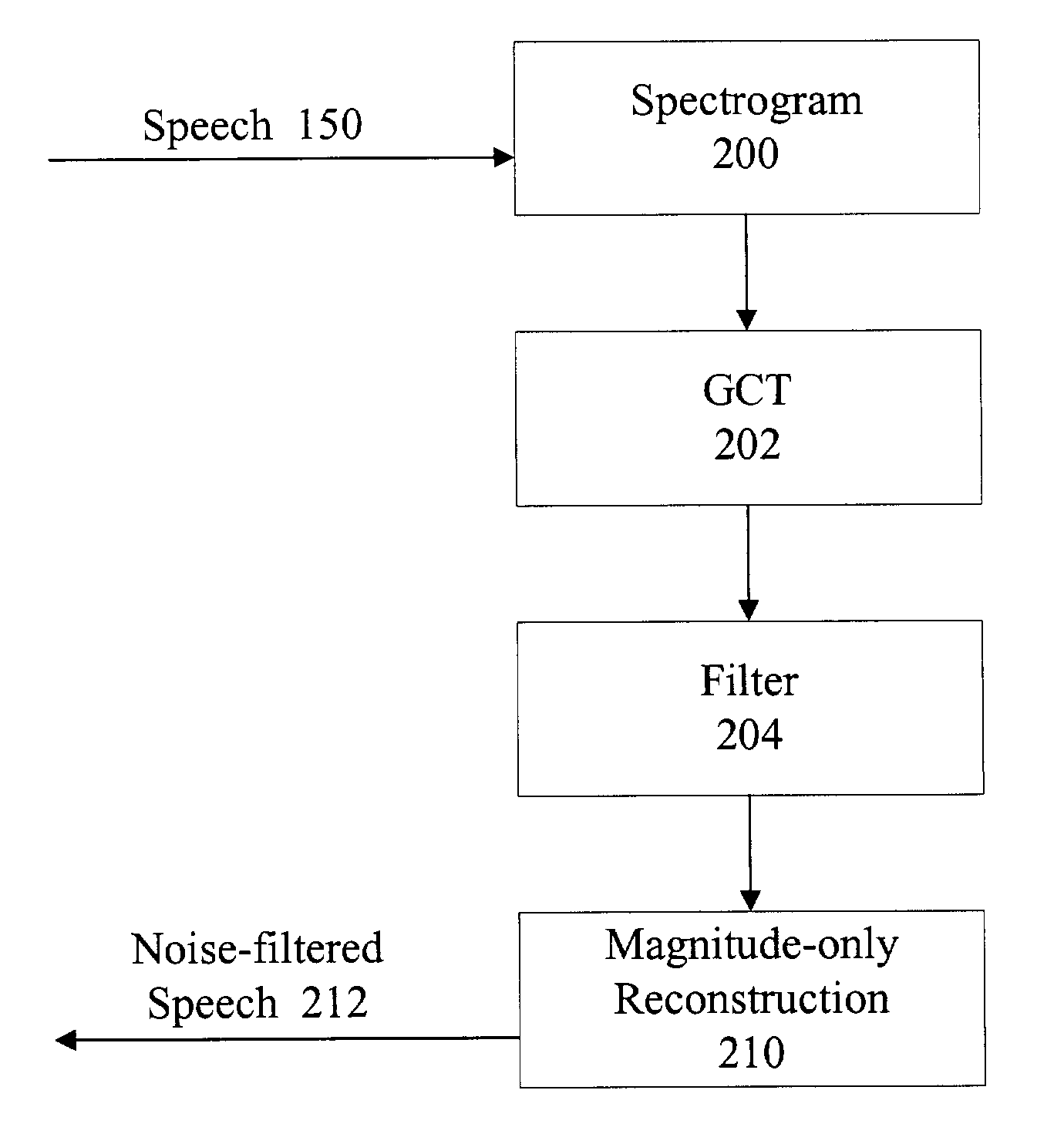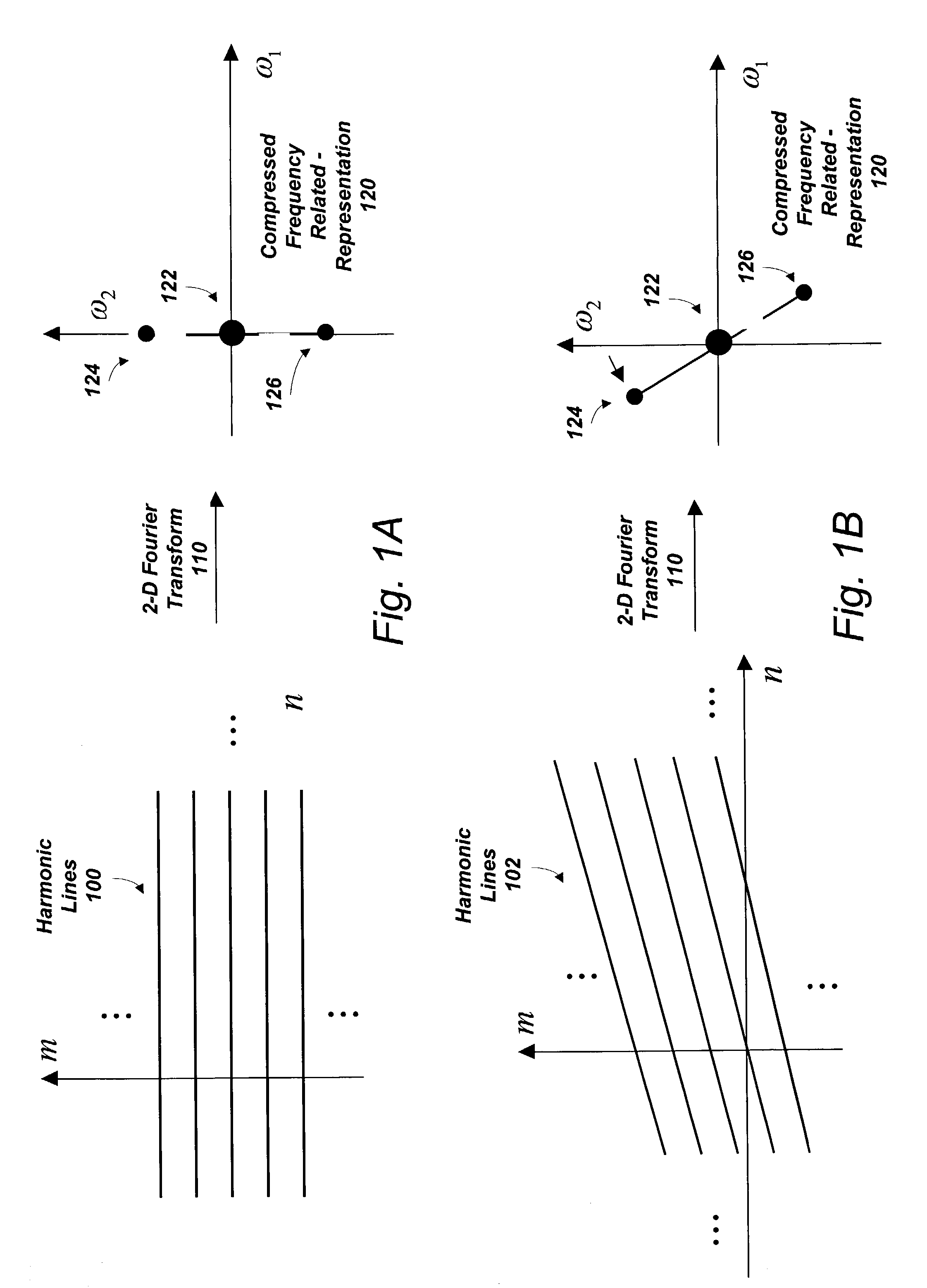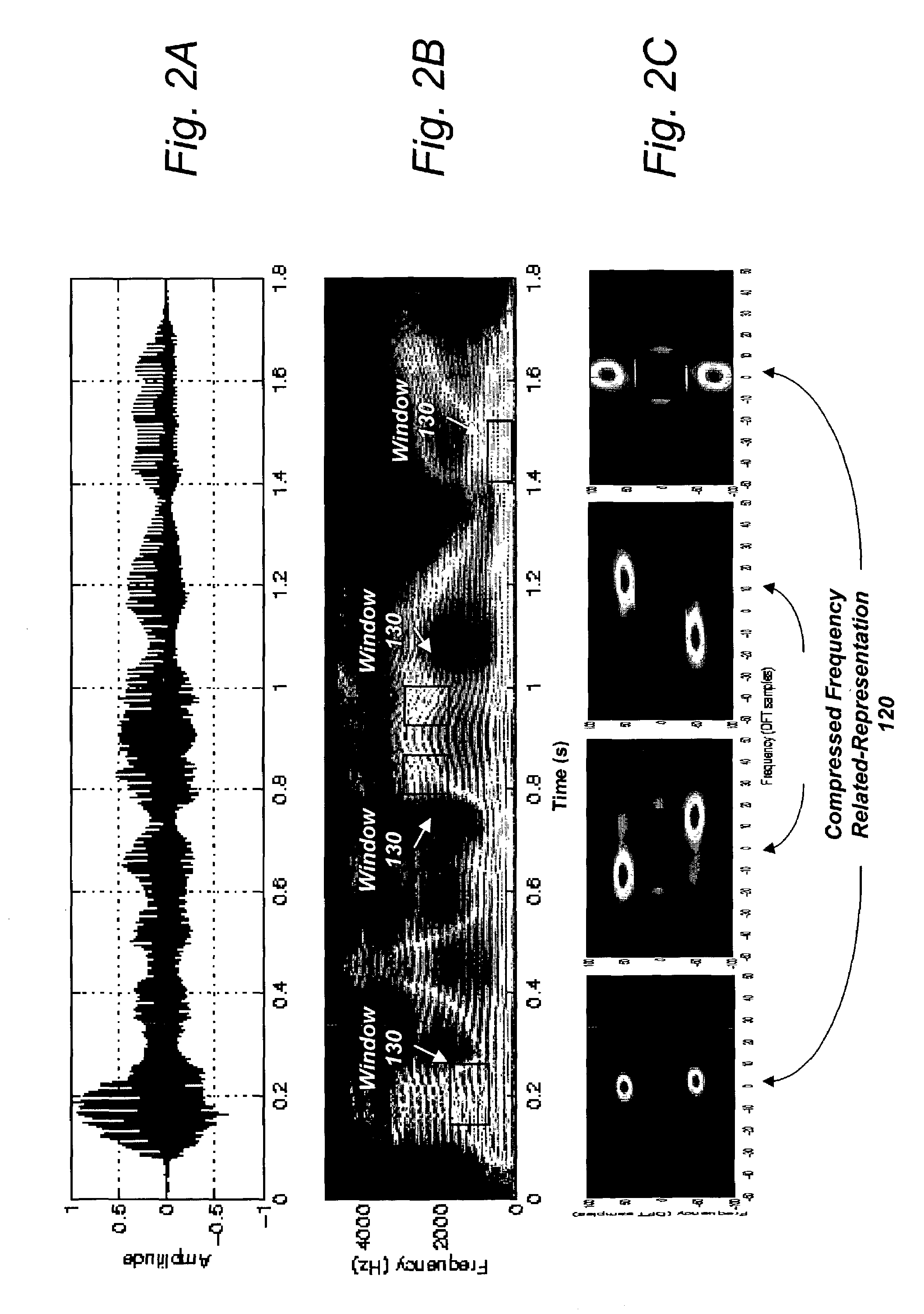2-D processing of speech
a speech processing and speech technology, applied in the field of speech processing, can solve the problems of filtering noise from the acoustic signal, affecting the calculation of pitch estimation techniques, etc., and achieve the effect of improving the calculation of pitch estimation and filtering nois
- Summary
- Abstract
- Description
- Claims
- Application Information
AI Technical Summary
Benefits of technology
Problems solved by technology
Method used
Image
Examples
Embodiment Construction
[0025]A description of preferred embodiments of the invention follows.
[0026]Human speech produces a vibration of air that creates a complex sound wave signal comprised of a fundamental frequency and harmonics. The signal can be processed over successive time segments using a frequency transform (e.g., Fourier transform) to produce a one-dimensional (1-D) representation of the signal in a frequency / magnitude plane. Concentrations of magnitudes can be compressed and the signal can then be represented in a time / frequency plane (e.g., a spectrogram).
[0027]Two-dimensional (2-D) processing of the one-dimensional (1-D) speech signal in the time-frequency plane is used to estimate pitch and provide a basis for noise filtering and speaker separation in voiced speech. Patterns in a 2-D spatial domain map to dots (concentrated entities) in a 2-D spatial frequency domain (“compressed frequency-related representation”) through the use of a 2-D Fourier transform. Analysis of the “compressed frequ...
PUM
 Login to View More
Login to View More Abstract
Description
Claims
Application Information
 Login to View More
Login to View More - R&D
- Intellectual Property
- Life Sciences
- Materials
- Tech Scout
- Unparalleled Data Quality
- Higher Quality Content
- 60% Fewer Hallucinations
Browse by: Latest US Patents, China's latest patents, Technical Efficacy Thesaurus, Application Domain, Technology Topic, Popular Technical Reports.
© 2025 PatSnap. All rights reserved.Legal|Privacy policy|Modern Slavery Act Transparency Statement|Sitemap|About US| Contact US: help@patsnap.com



